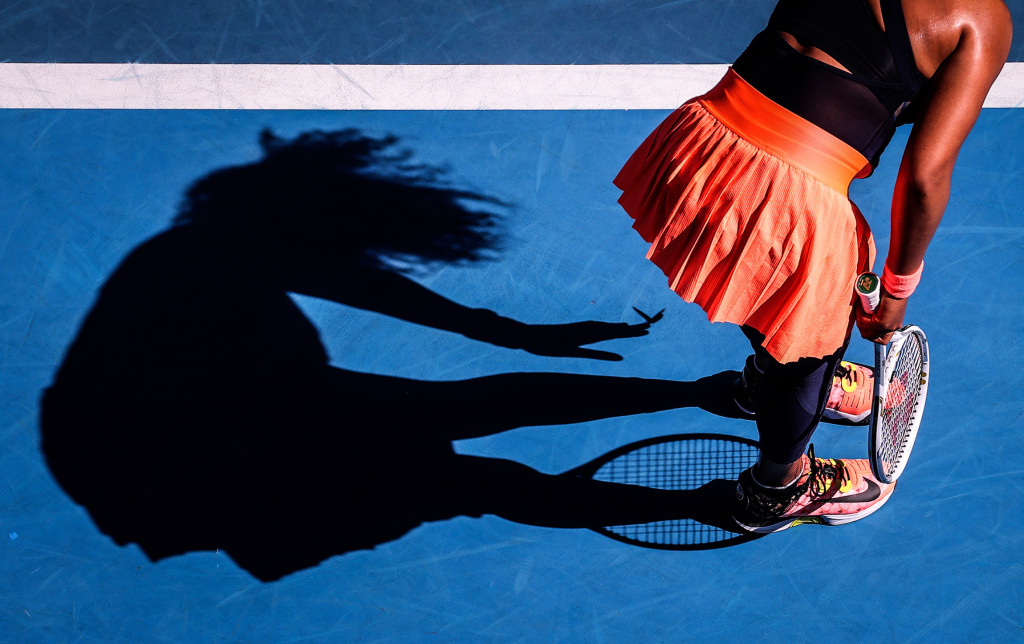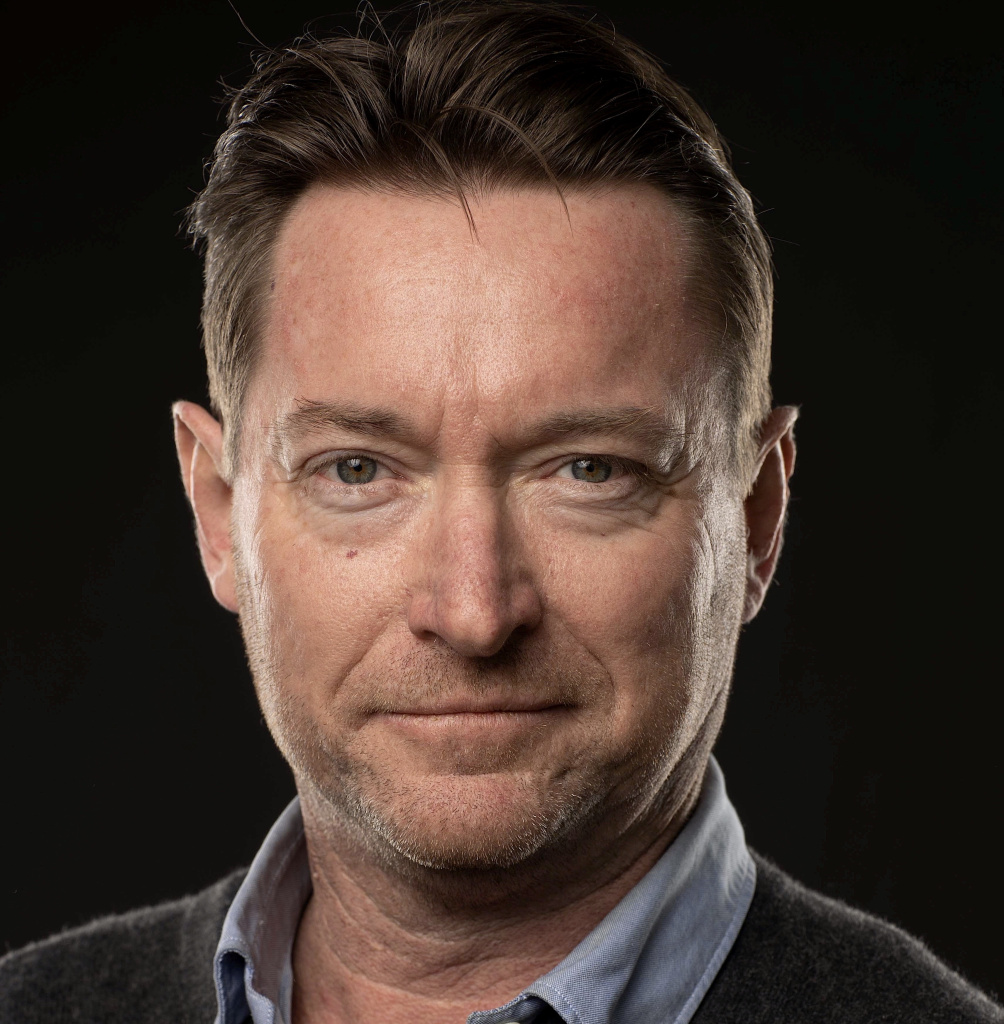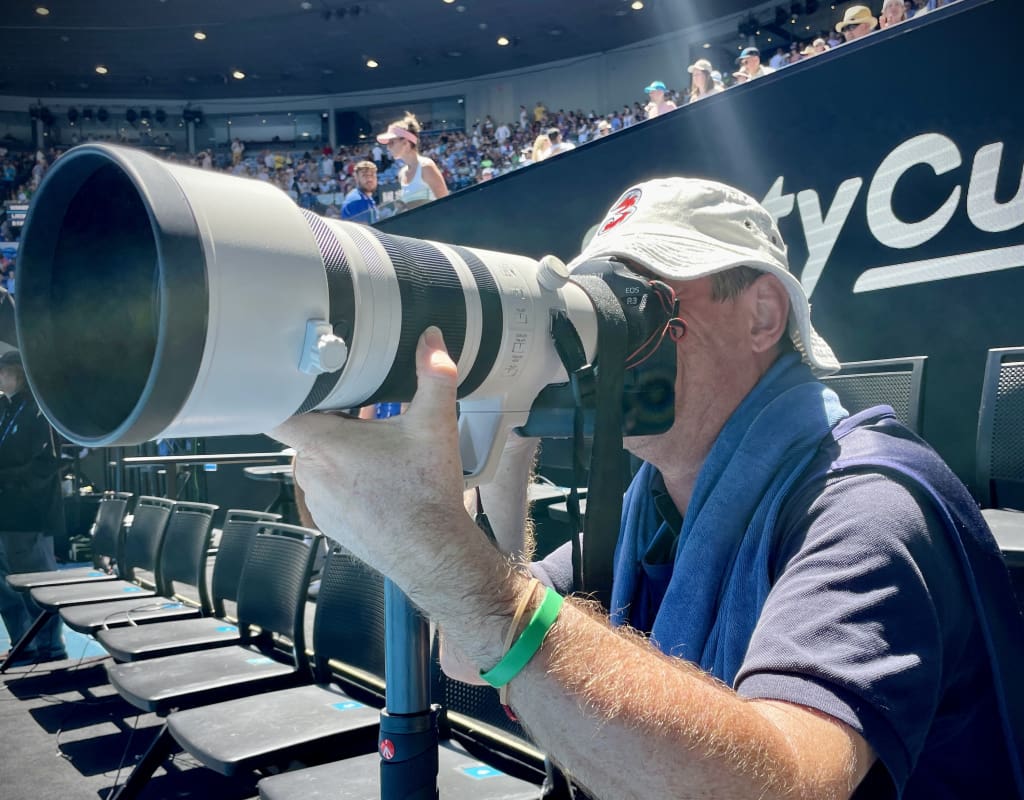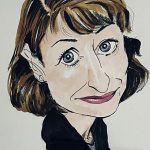Multi award-winning photographer David Gray tells Editor at Large Louise Evans how, in the middle of grand slam madness, he captured a butterfly resting on the finger of Australian Open champion Naomi Osaka
A ghostly silence hung over Melbourne Park. It was the middle of deep Covid 2021 and the crowds were sparse and then non-existent as Victoria went into a hard five-day lockdown.
Butterflies and birds had taken up residence in the empty Australian Open stadiums where play continued apace down on the courts.
Career photographer Dave Gray remembers the silence as he was shooting Japan’s US Open champion Naomi Osaka, who was on her way to winning her second Australian Open title.
Gray uses the noise of crowd reaction as one indicator to help capture award-winning images, but today it was eerily quiet, and still.
“Suddenly this butterfly flies into the court and settles on Naomi’s dress,” Gray said. “She delicately and daintily let it rest on her hand and took it to the side of the court. When I captured the image I thought ‘wow that is a really beautiful, different and unique moment’. It was one of those special occasions that don’t happen very often. A few years ago I got Nadal blowing a dandelion off his finger which was also quite memorable.”
The butterfly image won Gray the 2022 World Sports Photography Award to add to his three Walkley prizes and a 2021 Wisden Cricket Photo of the Year honour.

Gray’s been a professional media photographer for 35 years and worked around the world in Asia, the South Pacific, North and South America, Europe and Africa. He’s also covered 10 Olympic Games, more than 25 Australian Opens, over a dozen football, cricket and rugby World Cups and numerous world athletics and swimming championships.
Despite this wealth of global experience and the healthy stash of awards in his pool room, he said capturing prize-winning photographs was extremely difficult.
“Whether shooting news or sport you have to be reading what is going on,” the Sydney-based Gray said. “You need to do your homework and understand what is happening because as a photographer you are trying to predict what is going to happen next so you can capture it.
“In tennis you have to be focused on the player who has breakpoint, who is about to win the match. You have to be switched on. Cricket is the same, football is more erratic.
“We are trying to be fortune tellers. We’re trying to capture a pinnacle moment, the moment when the game changes. And capture that in the most visually-interesting and beautiful way with a clean background that makes the subject stand out. It is extremely difficult with so many advertising signs.
“I always shoot sport as a news event because I’m trying to catch that moment that changes everything.”

The hours Gray works at the Australian Open for leading global news agency Agence France Presse are brutal. He is at Melbourne Park at 11am for the noon start of play and he’s still there after midnight thanks to the AO’s ridiculous broadcast-driven schedules.
Then there’s the energy-draining heat. “There is no air flow on court and it’s often very hot,” Gray said. “We have to concentrate constantly and be ready for the big moment for two to four hours for each match. It’s tough.”
The competition among photographers to capture the big moments is also brutal. Gray said one of the biggest races was to be the first to capture and distribute the image of the tournament champion holding the AO trophy with the winning photographer taking just 40 seconds between capture and publication. “The technology has made the whole process very fast,” he said. “We’re sending images straight off the camera to a photo editor while we’re on court. We could be sending 300 images on a big match.”

Gray’s favourite camera is a Canon R3 which has an autofocus system that tracks and focuses on the subject’s eye. “The technology is changing so quickly, you have to change your shooting style with each camera that comes out. You have to keep up.”
His favourite lens is a 100/300 which he says is perfect for tennis action because it’s a little bit wider and tighter, allowing him to zoom in and out on that 100/300 focal length.
Despite covering over 25 Australian Opens, Gray’s favourite sport to shoot is cricket and he is known in Sydney social cricket circles as a handy medium-pace bowler and a run-scoring tail ender.
“I grew up playing a lot of cricket so cricket is my favourite sport to shoot and it’s so difficult to shoot too. You really have to know and understand the sport. I love it.”
Louise Evans is an award-winning journalist who has worked around Australia and the world as a reporter, foreign correspondent, editor and media executive for media platforms including The Sydney Morning Herald (eight years), The Australian (11 years) and Australian Associated Press (six years in London, Beijing and Sydney).
A women sports’ pioneer, Louise was the first female sports journalist employed by The Sydney Morning Herald and the first female sports editor at The Australian. Louise went on to work at six Olympic Games, six Commonwealth Games and numerous world sporting championships and grand slam tennis events.
Louise is the Founding Editor of AAP FactCheck, the Creator of #WISPAA – Women in Sport Photo Action Awards and national touring Exhibition and the author and producer of the Passage to Pusan book, documentary and exhibition.
In 2019 she was awarded the Order of Australia Medal (OAM) Queen’s Honour for services to the media and sport and named an Australian Financial Review Top 100 Woman of Influence for services to the arts, culture and sport.
In 2020 she won a NSW Volunteer of the Year Award plus the NSW Government Community Service Award for her women-in-sport advocacy work.




Discussion about this post